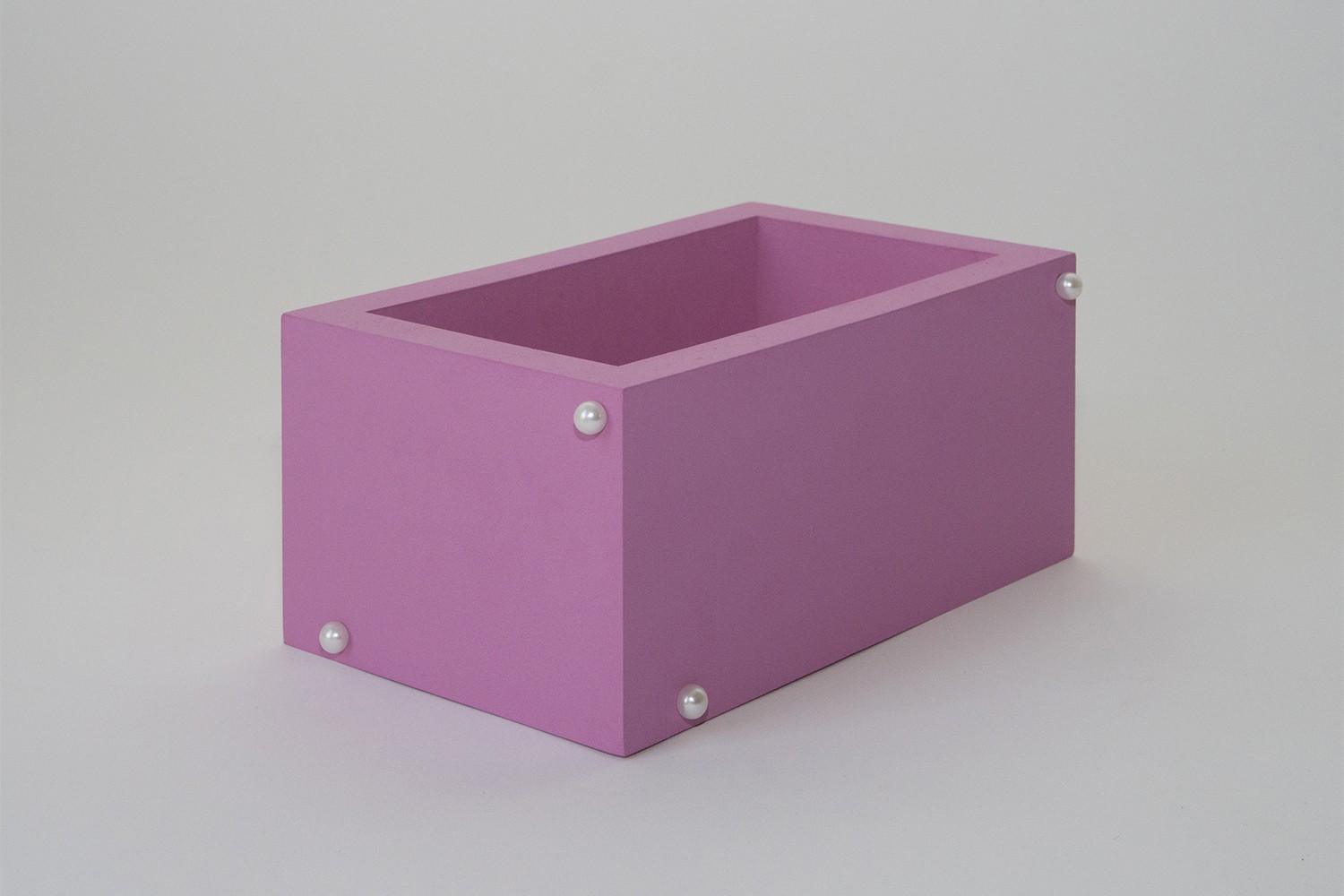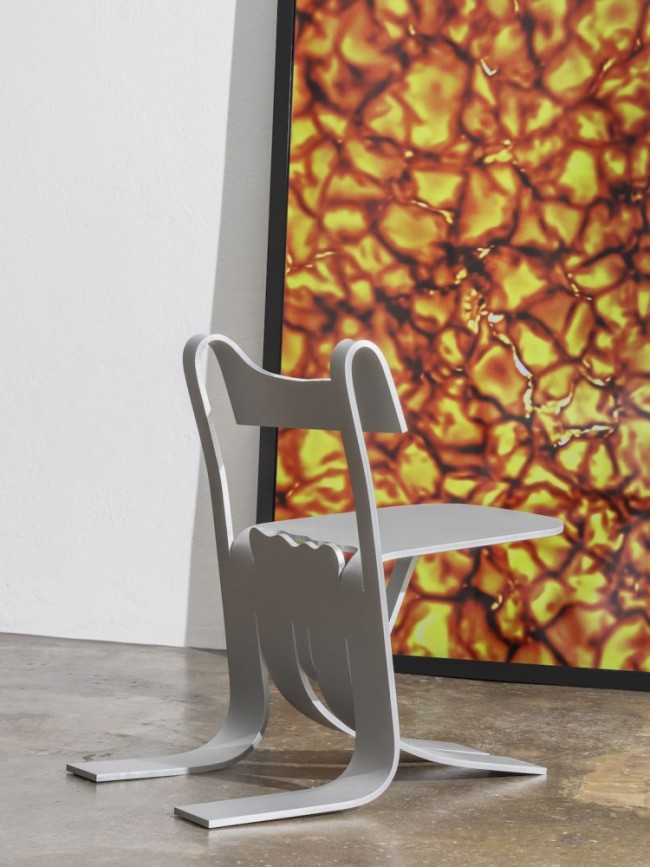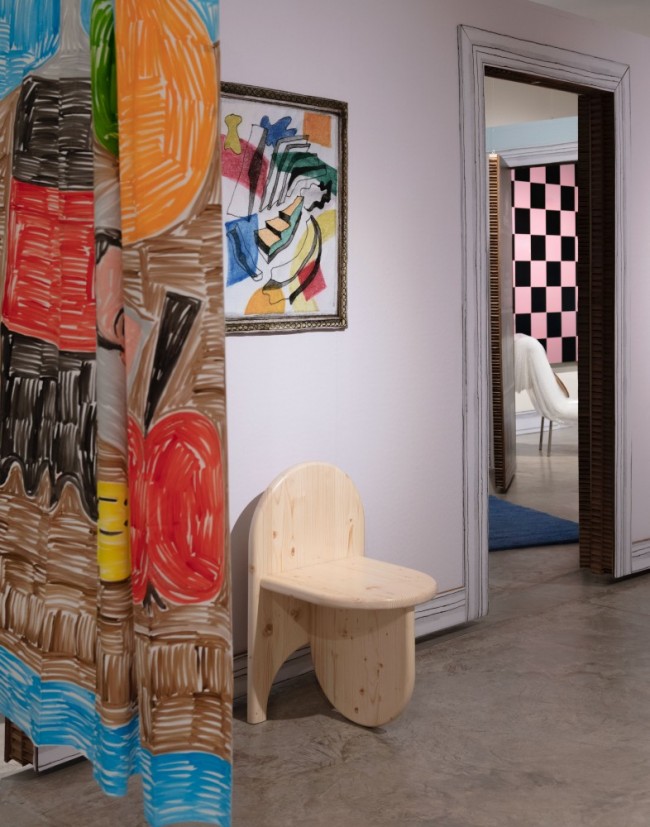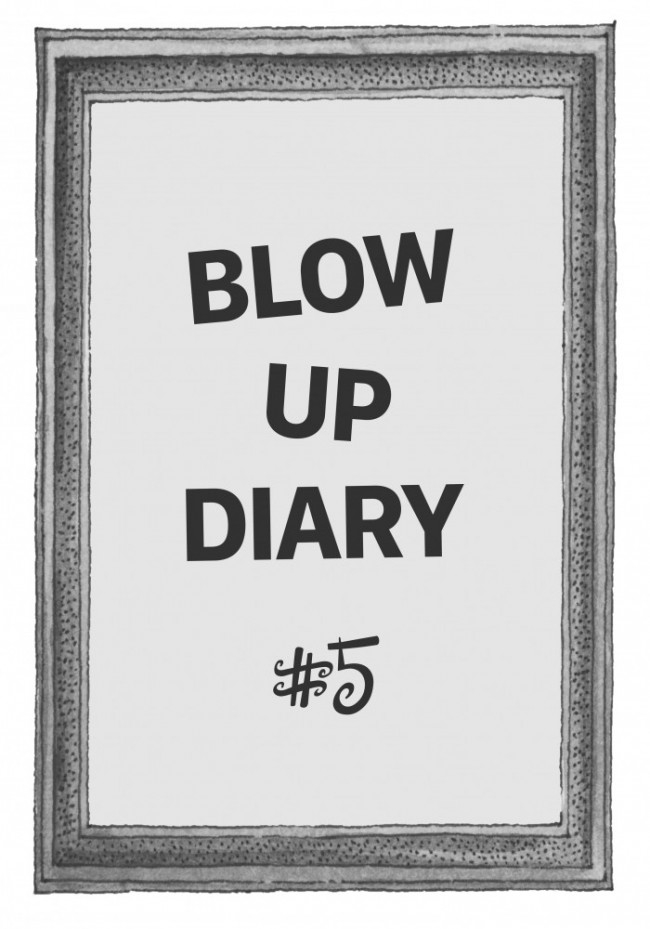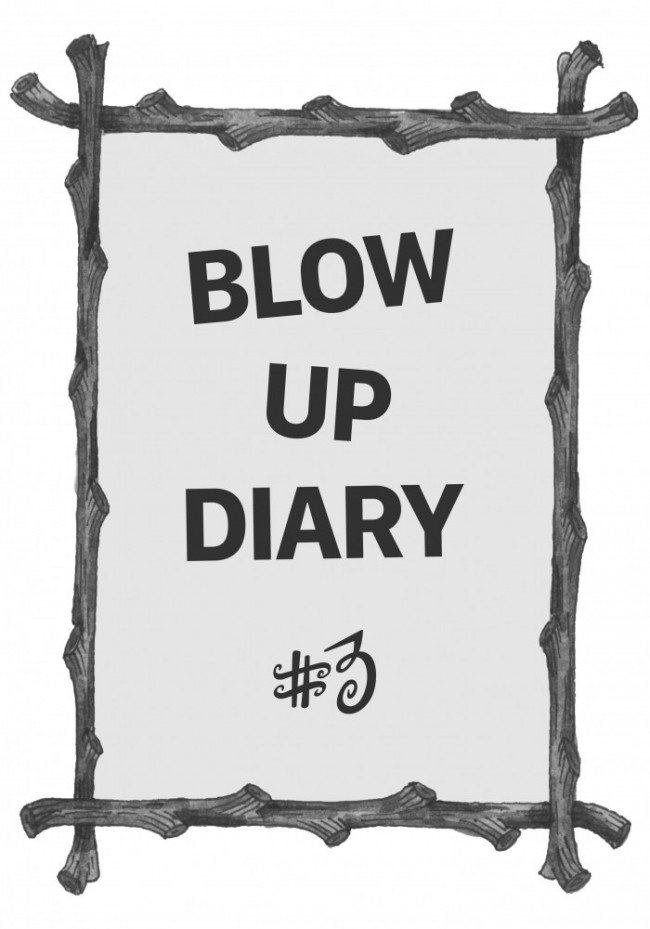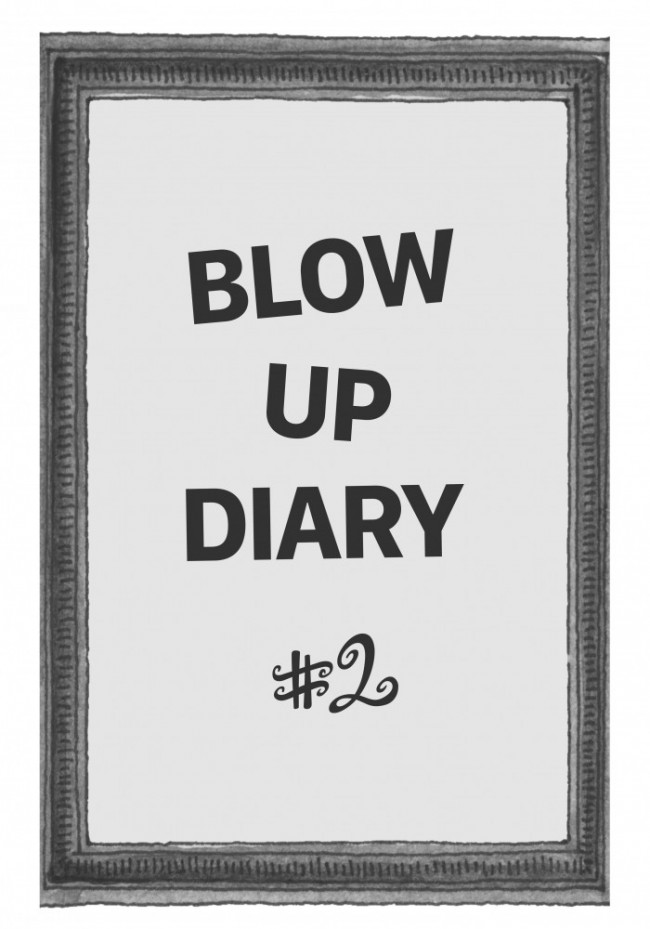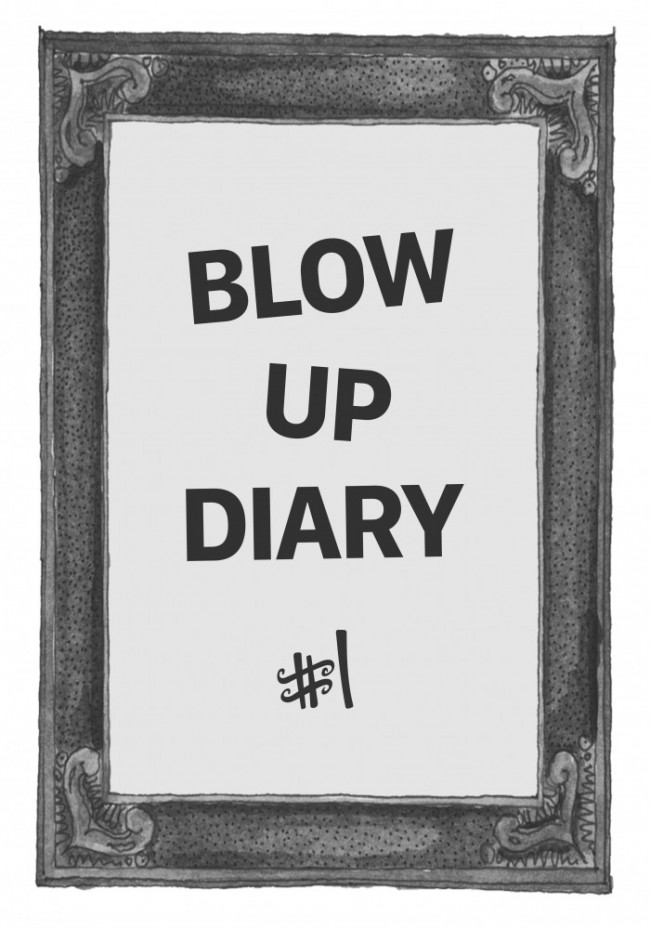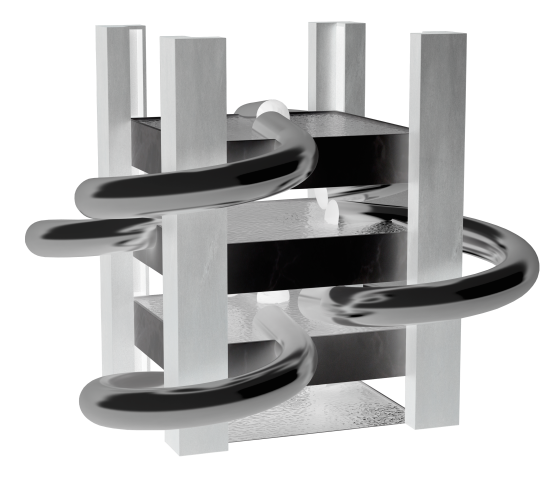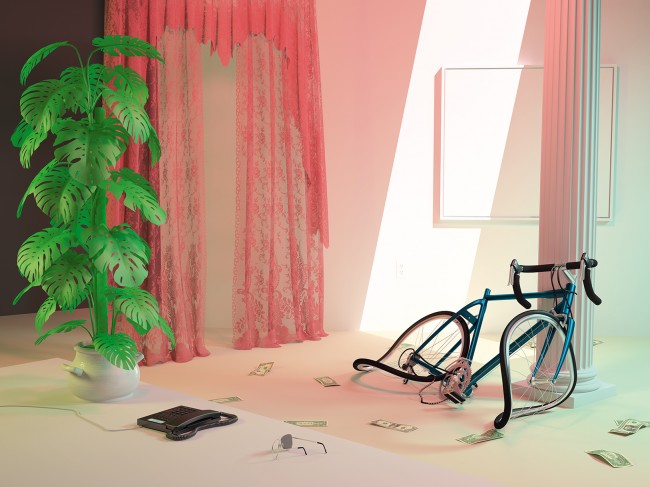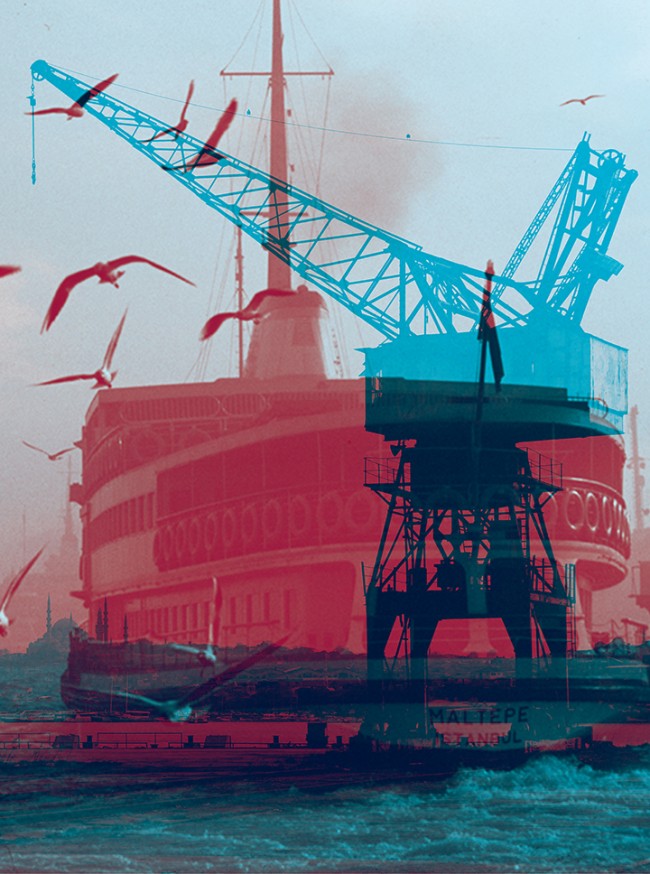SOFT BAROQUE’S FURNITURE DESIGNS BLUR THE PHYSICAL AND DIGITAL
At the 2015 Milan furniture fair, in the disused Garage Sanremo, designer Max Lamb presented a series of chairs, each one crafted by hand and speaking of things like physicality, industry, and the enduring appeal of natural materials. Just next door, in the garage’s anterooms, was another intriguing exhibition of furniture that was about precisely none of those things: entitled New Surface Strategies, it was the work of Lamb’s former assistant, Nicholas Gardner, and his partner Saša Štucin, who together form the London-based studio Soft Baroque. In the first room the duo presented simple, Enzo Mari-esque furniture pieces built from uniformly sized plywood planks and flocked in chroma-key blue, while in the second, a real-time projection showed the furniture with its blue surface digitally keyed out and replaced by a stream of images, depicting textures ranging from a rippling wave pool to the shiny finish of a red Ferrari. “We were trying to create a piece of furniture that had an irrational amount of transformation or choice,” says Gardner. “A utopian super-material, where you’d never need to buy another object because you could infinitely change this one.”
Soft Baroque’s mix of traditional furniture smarts and ephemeral, image-making savvy comes as no surprise when you consider the duo’s backgrounds. In his hometown of Melbourne, Australia, Gardner studied furniture and made custom pieces for clients, while Štucin studied graphic design and visual systems in her native Slovenia. When the two paired up in 2013, after graduating from London’s Royal College of Art, they found that they were both interested in exploring how thoroughly digital representations have begun to supersede physical objects, and how much design, as a result, has become about creating a spectacle rather than enabling a specific function. What this has translated to is a series of objects that stand on the winking cusp between the two: a mirror that emits a scented vapor cloud, partially obscuring the reflection; a hardware-store screw capped by a delicate freshwater pearl, a high-backed wooden chair that shoots fireworks from its seat but nonetheless remains intact. As a residency in the Italian countryside this summer, the two took their desire to blur the digital/IRL line to a logical extreme by making a furniture series that they then photographed to create computer-desktop images that act as repositories for file folders — quite literally, a “shelfie.” “Where we would like to situate ourselves,” says Štucin, “is making interesting beautiful objects that have a story and that exist in the real world, but that also exist as images that capture a feeling.”
Taken from PIN–UP No. 19, Fall Winter 2015/16.
Portrait by Harry Mitchell. Images courtesy of Soft Baroque.








